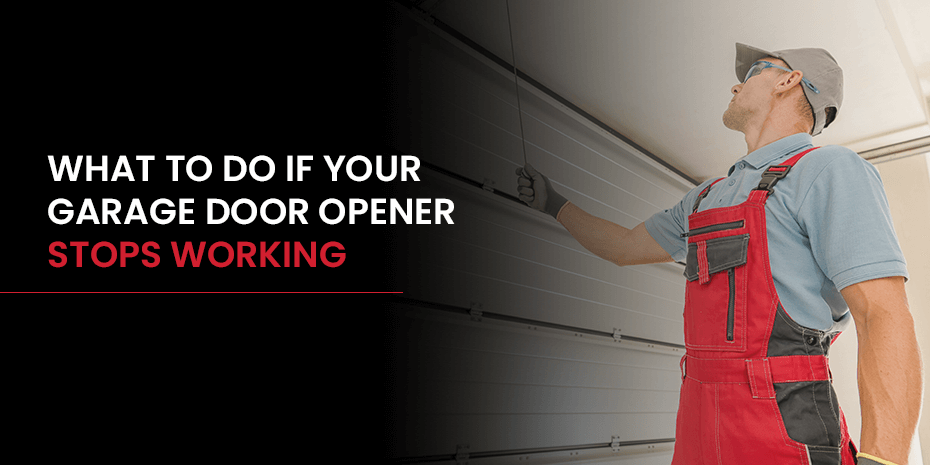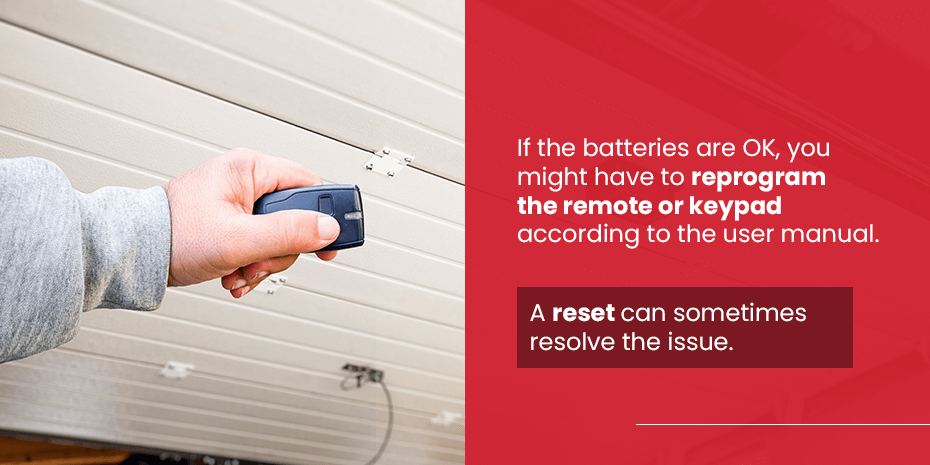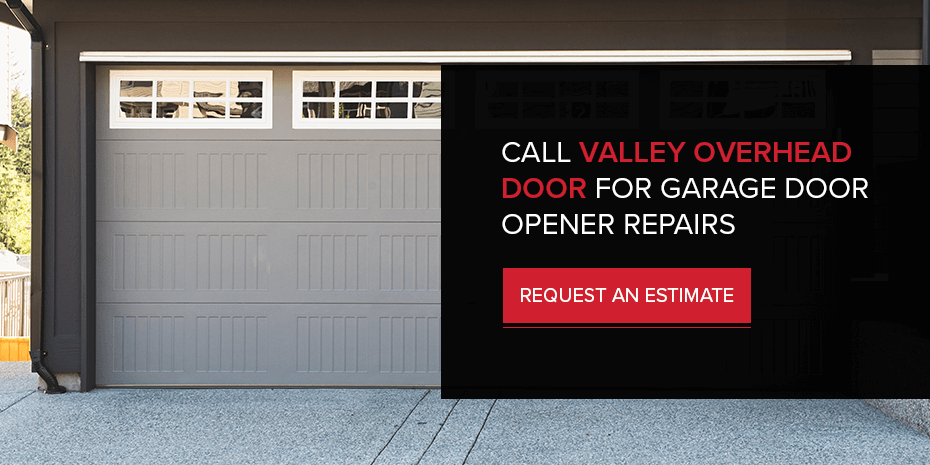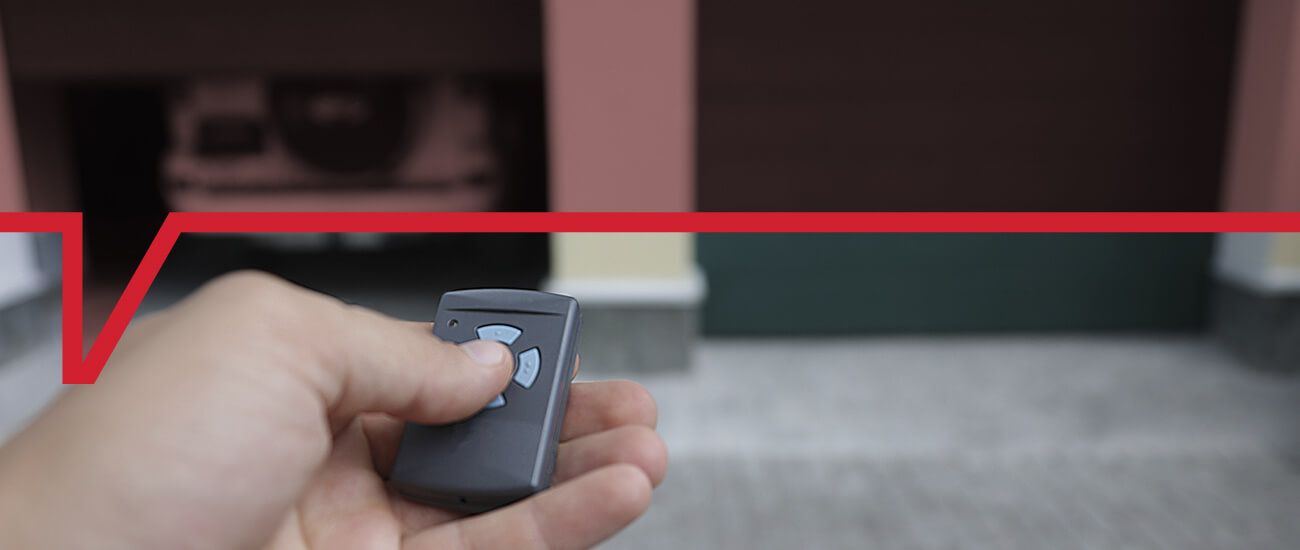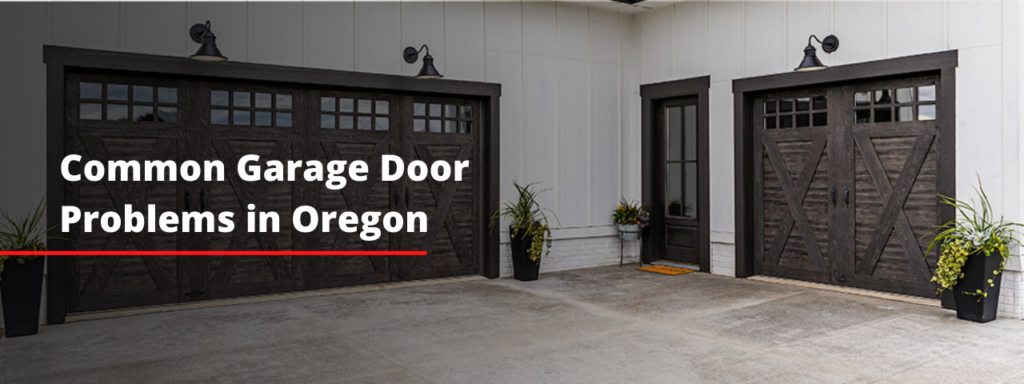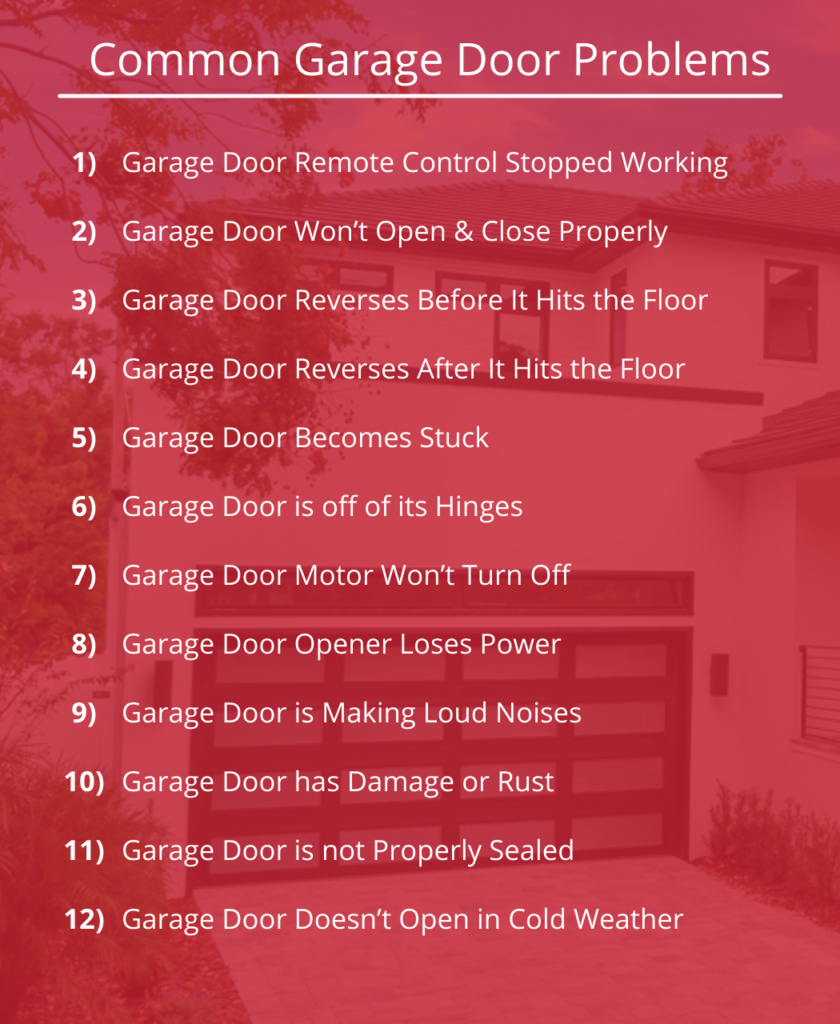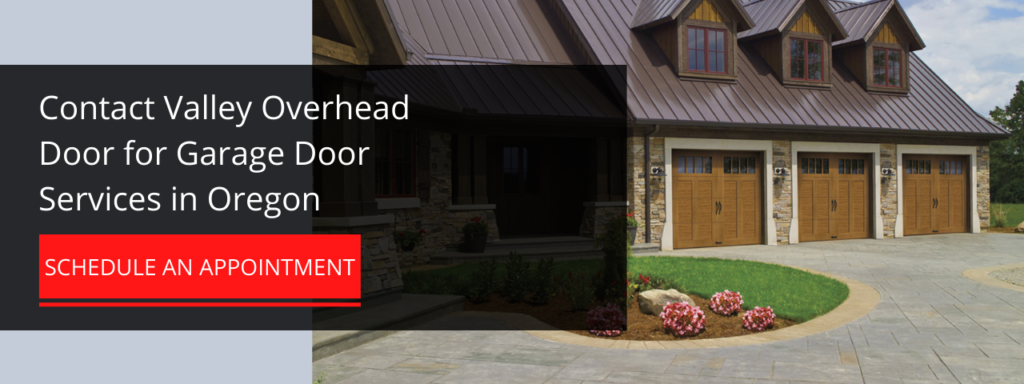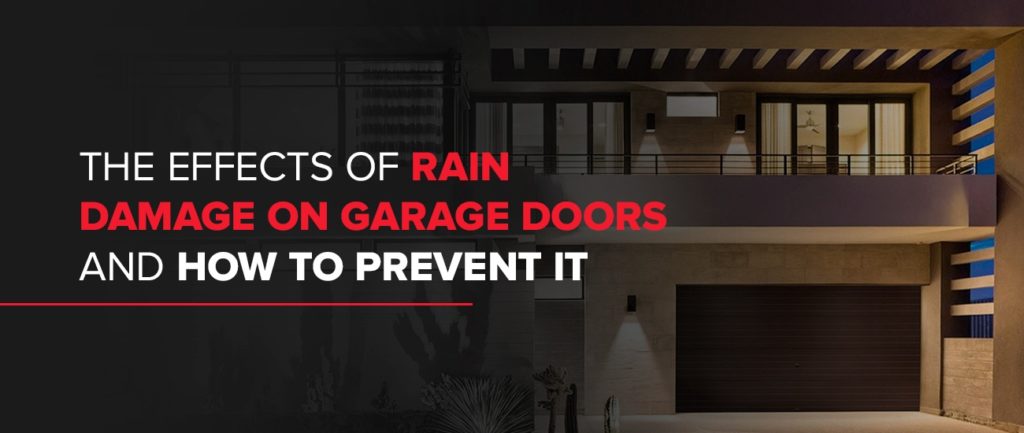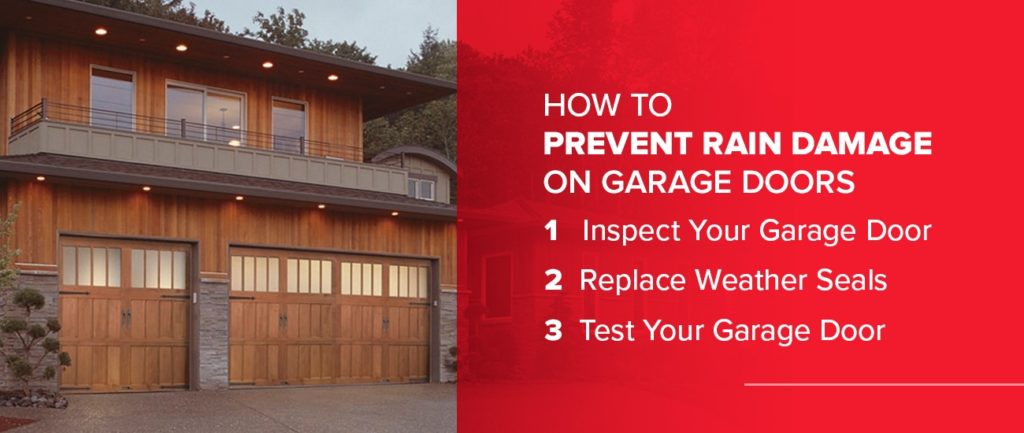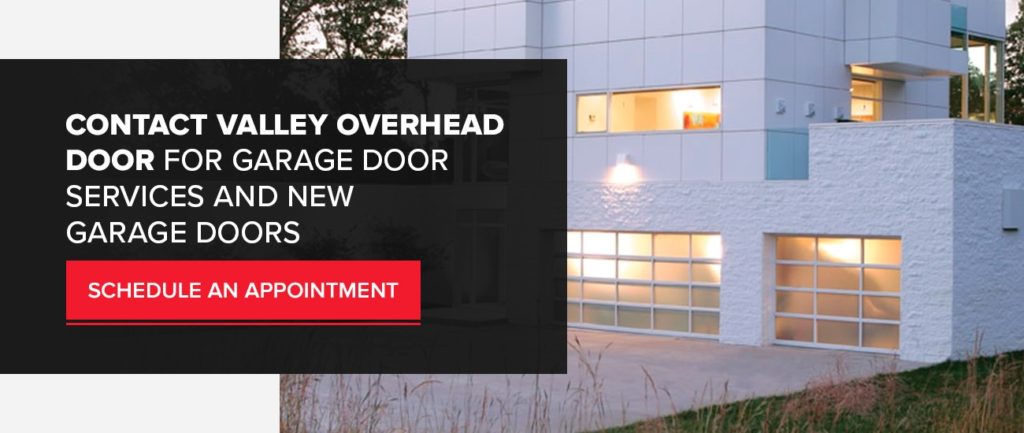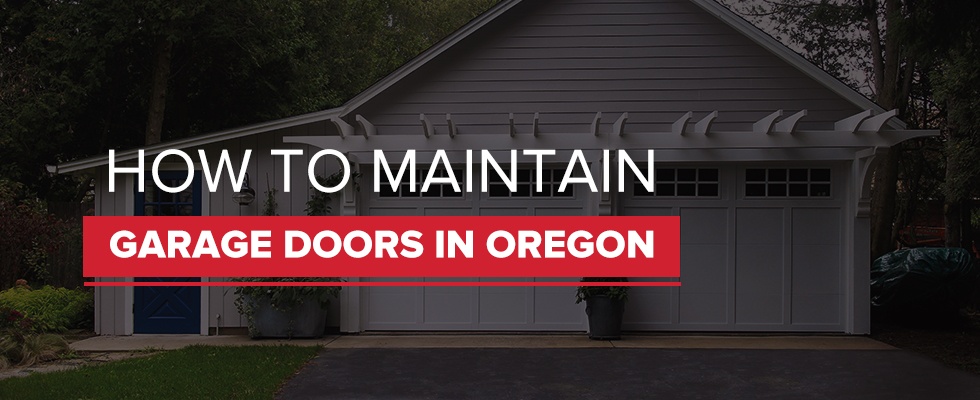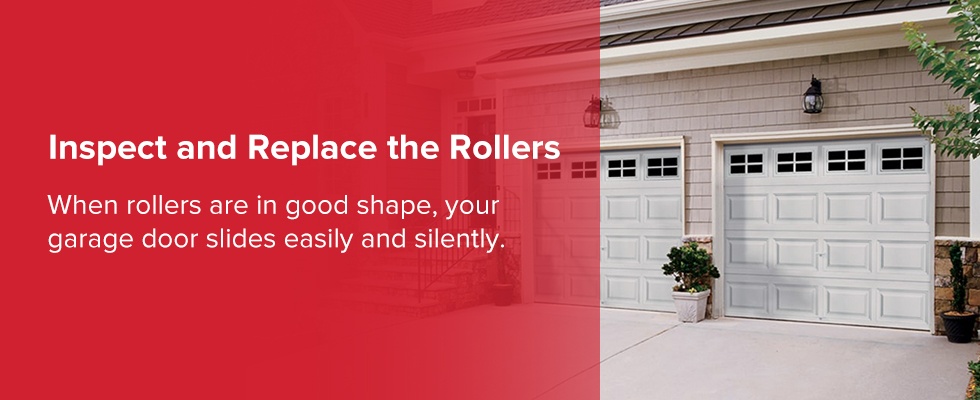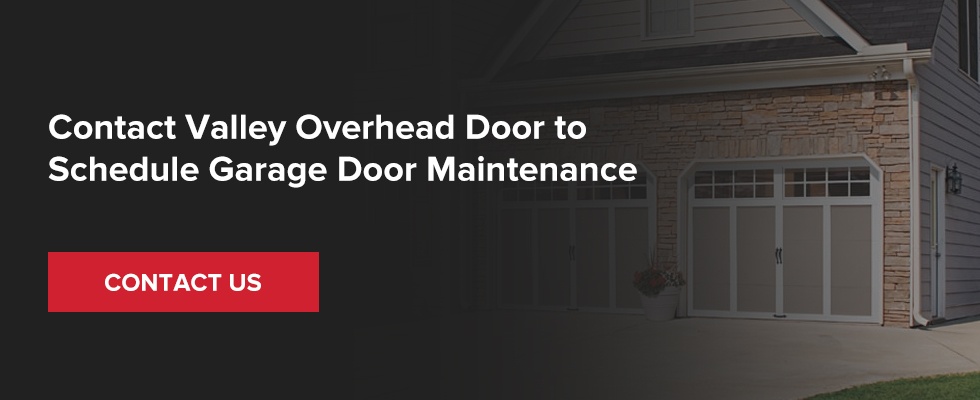Garage Door Opener Stopped Working? Here’s What to Do
Since you rely on your garage door daily, it must be in good working condition. With numerous moving parts, you can expect something to break eventually, even with routine maintenance. One such component is the opener, which is vital for ensuring the door operates efficiently.
There’s no cause for alarm with these helpful tips on what to do if your garage door opener stops working. Read on for more.
What to Do If Your Garage Door Opener Stopped Working
When your garage door opener suddenly quits working, you’ll feel more confident if you can identify the problem’s potential source. We’ll provide our top garage door opener troubleshooting tips below.
Check the Power Source
It may seem obvious, but the first thing you should check is your garage door’s power source. If it’s become disconnected, it’s a quick fix to reconnect it again. The electricity powering the motor may also be off due to a tripped switch or blown fuse. Check the circuit breaker to determine whether that is the problem.
If it is not a power source issue, disconnect the opener and try manually opening and closing the door. If you can, your opener is probably faulty, but something else is wrong if your door doesn’t budge.
Rule out Other Issues
If the garage door opener is working, but your door still won’t operate manually, you have another problem on your hands. Inspect the cables to see if they have snapped. If they’re intact, they should have the appropriate tension. Check that the rollers are in the tracks and don’t have any dirt or debris stuck in them that would prevent them from functioning. Often, they only need lubrication to work properly. Survey all parts to ensure nothing else prevents the door from opening and closing manually.
Ruling out other potential issues can help you isolate what’s wrong, making it easier to find a quick solution.
Test the Garage Door Opener Remote
Check that the opener remote batteries aren’t dead and that the keypad in the garage is working. If the batteries are OK, you might have to reprogram the remote or keypad according to the user manual. A reset can sometimes resolve the issue.
If they both work, a loose wire or broken antenna on the opener might prevent the signal from transmitting. Inspect the opener unit to see if this is the case, and reconnect any loose wiring you find. If you’re unsure, contact a qualified garage door contractor to assist.
Also, check that you’re within range of opening and closing the door. You might have to move closer to ensure you are. Lastly, look closely for any signs of damage, and replace the remote if you see any.
Clean and Align the Photo Eye Sensors
Your garage door has photo eye sensors on both sides at the bottom of the interior. Their role is to detect movement, ensuring the door doesn’t close on any person or object. This safety precaution has prevented numerous accidents and injuries.
Since these sensors work with the opener to operate efficiently, any problems with your garage door opener may result in the sensors not working and vice versa. If your garage door opener isn’t working, it might not be receiving the signal from the sensors that trigger the cable release to open the door. Check that the sensor glass is clean and dust-free and that the sensors have not become misaligned.
Reset the Opener Limit Switch
The limit switch is a vital component that assists in controlling the speed and extent to which the door can open and close. It serves a similar safety function as the sensors by stopping the door from closing on people and objects. It signals the motor to close and open the garage door when the rollers come in contact with it. The switch resembles two knobs and is close to the rollers on the tracks. You can also identify it by looking for screws on the motor unit.
An improperly set or failing switch may prevent the door from closing or cause it to reverse while closing, just as it hits the ground. You may need to adjust or reset the limit switch for it to perform its function efficiently again. While you can do this task yourself, check the instruction manual to ensure you adjust it correctly. Consult a professional garage door technician if you’re unsure how to do it.
Repair or Replace the Garage Door Opener
If all else fails and you suspect the motor could have burned out, it may be time to replace the garage door opener. A technician can help you decide whether to repair or replace this equipment by inspecting your opener in person.
Call Valley Overhead Door for Garage Door Opener Repairs in Oregon
It’s not only an inconvenience when your Liftmaster garage door opener stops working — it can also pose a risk if it’s not closing correctly, potentially inviting intruders who could take advantage of the situation. For peace of mind, it helps to know which parts to check to ensure you rule out any severe issues with your opener that could require a total replacement. We intended these tips to be informative and helpful in such situations. Still, we always encourage you to contact an experienced garage door company for repairs or replacements.
Our skilled experts are serious about providing the best service without compromise. We pay attention to detail, so you’re confident in the results at the end of every job. We are ready to help you fix your garage door or garage door opener without delays and hassles. Call us at 541-926-3828 or request an estimate so we can start as soon as possible.
Garage Door Opener Buying Guide: How to Choose the Right Garage Door Opener
- Choosing a Garage Door Opener and Understanding the Various Features
- Garage Door Opener Types
- Where to Buy Garage Door Openers in Oregon
If your Oregon home has a garage, you probably rely on an opener to raise and lower the door. You can operate this device via a wall switch or a remote control unit in your vehicle, preventing the need to open or close the door manually.
Like most mechanical devices, a garage door opener won’t last forever. The average service life of an opener is 10-15 years, although heavy usage and other factors can shorten the time frame.
If you’re like many homeowners, you may only purchase a garage door opener once or twice in your lifetime. With so many options available on the market, selecting the right device for your needs and budget can be challenging. Valley Overhead Door has prepared the following garage door opener buying guide to simplify the process.
Choosing a Garage Door Opener and Understanding the Various Features
If it’s been a few years since you’ve purchased a garage door opener or you’re a first-time buyer, you might be surprised at the wide range of product features available today.
While numerous options are available, these features typically deliver the maximum value and convenience to most homeowners.
Keypad Functionality
While you may use the opener’s remote control unit to operate the door, there may be times when this device isn’t accessible or practical. Installing an exterior wireless keypad next to the garage door enables you and other members of your household to raise or lower the door without the remote by entering a secure code. You won’t have to worry if you lose the remote or don’t have it in your vehicle for any reason.
Battery Backup
If you currently have an older opener model, you may experience the hassle of disengaging it and opening or closing the door manually whenever a power outage occurs. If you upgrade to a newer opener with a built-in battery backup system, your door will continue to function without interruptions.
Rolling Code Technology
Did you know that an enterprising thief can use a device that mimics the code transmitted by your opener’s remote control unit to break into your garage? Fortunately, rolling code technology automatically changes the code every time you open or close the door, significantly reducing this risk.
Smartphone Compatibility
You may already use your smartphone to lock and unlock your home’s exterior doors, control the lighting and operate appliances. You can also purchase a Wi-FI-enabled garage door opener that allows you to open and close the door remotely from any location. If you suddenly realize you forgot to close the door when leaving for work, you can handle the task with a quick tap of a button on a mobile app.
Garage Door Opener Types
You can also choose from various types of garage door openers on the market:
- Jackshaft-drive: A jackshaft opener is a wall-mounted device that provides maximum security. It operates via a 24-volt DC motor that powers the cables and pulleys when raising the door. While these openers are more expensive, they’re also the most technologically advanced products available.
- Chain-drive: As the name indicates, these openers have a chain connecting the motor to a trolley that pulls an arm to open the door and pushes it when closing. While these openers provide the least expensive option, they also tend to be noisier due to the metal-to-metal contact and heavy vibration.
- Belt-drive: These openers are quieter because they include a rubber belt instead of a metal chain. Operating the opener triggers the movement of the belt, which raises and lowers the door by sliding the trolley. The belt does not require lubrication, making these devices easier to maintain than chain-drive models.
Contact Valley Overhead Door for Garage Door Openers
Do you own a home in Corvallis, Salem or Albany, Oregon, or the surrounding areas? Valley Overhead Door can meet all your garage door opener needs. We feature a wide selection of LiftMaster products that provide the ideal combination of convenience, security, safety and low maintenance. As a local company, we also handle installation and repairs.
Do you have questions regarding how to choose the right garage door opener? Contact Valley Overhead Door to learn more today!
Common Garage Door Problems in Oregon
Jump To:
- 1. Garage Door Remote Control Stopped Working
- 2. Garage Door Won’t Open & Close Properly
- 3. Garage Door Reverses Before It Hits the Floor
- 4. Garage Door Reverses After It Hits the Floor
- 5. Garage Door Becomes Stuck
- 6. Garage Door is off of its Hinges
- 7. Garage Door Motor Won’t Turn Off
- 8. Garage Door Opener Won’t Work Because Your Home Lost Power
- 9. Garage Door Makes Loud Noise When Opening & Closing
- 10. Garage Door has Damage or Rust
- 11. Garage Door is not Properly Sealed
- 12. Garage Door Doesn’t Open in Cold Weather
- Professional Garage Door Repair in Oregon
Homeowners in Oregon rely on their garage door and garage door openers to work correctly. Whether it is raining or snowing, it is pivotal that your garage door opens up and closes when you need it most. However, garage doors occasionally run into problems, such as the remote not working, the door not opening, or the door getting stuck.
Valley Overhead Door understands your frustration when dealing with garage door problems! Read our guide outlining the most common garage door problems that homeowners in Oregon experience. For a severe garage door problem, submit a request for service or call us directly!
1. Garage Door Remote Control Stopped Working
Whether your garage door remote won’t open as prompted or won’t operate consistently, it is best for garage door owners to understand why garage door remotes malfunction. If your garage door remote is not working properly, it is due to on of the following reasons:
- Remote batteries are low or dead
- Remote signal is disrupted
- Lock button on the wall-mounted control is engaged
- Remote needs reprogramming
- Door control’s wiring is malfunctioning
- Ground fault interpreter (GFI) is blown
If you are experiencing an issue with your garage door remote, please get in touch with us today to schedule an appointment for one of our experienced technicians to come out and diagnose the issue!
2. Garage Door Won’t Open & Close Properly
In some cases, garage doors will not open and close properly. You may notice that the garage door wheel, also known as a roller, is not on the track. It is also possible that you will attempt to open the door and it stops halfway through, or you open the door without an issue but experience trouble as it closes, or vice versa. In any case, one of three things is likely occurring.
- Limits are off
- Rollers are Damaged
- Photo-Eyes are faulty
If your limits are off or your photo-eye sensor is faulty, you can start by looking for guidance in the garage door opener manual. Usually, both the garage door limits and the photo-eye sensor are adjustable. In the case that your rollers are damaged, it is best to contact us immediately to inspect the issue and repair it accordingly!
3. Garage Door Reverses Before It Hits the Floor
Two possible problems can cause a garage door to reverse before it touches the floor:
First, the garage door openers have an adjustment screw that controls closing force, and the close-force setting needs to be adjusted. The friction of the door rollers within the tracks is causing the door opener to incorrectly thinking the door reached the floor. Adjusting the sensitivity will solve this problem.
Second, there is damage to the rollers. Damage or rust to the rollers causes friction while the door is closing, causing the opener to stop before it hits the floor. Inspect your rollers and ensure they are well lubricated to solve this problem.
4. Garage Door Reverses After It Hits the Floor
If you close your garage door and it reverses right after it hits the floor, then you have an issue with your close-limit switch. You can prevent this from happening by adjusting the close-limit screw on the door opener motor. Adjust the close-limit screw in small increments until the door stops when it touches the floor.
5. Garage Door Becomes Stuck
One of the most frustrating problems that happen with garage doors is when the door becomes stuck. When a door is stuck, it is usually caused by something in the opening machinery going bad. The chain could be off the track, the machine could need lubricant, or the power supply could be out. If you have trouble identifying why your garage door is stuck, call a professional to help identify the issue and repair the garage door.
6. Garage Door is off of its Hinges
Garage doors move off their hinge when the horizontal tracks become misaligned. Tracks become misaligned when the bolts on the bracket holding the tracks become loose or unscrewed completely. If the garage door has fallen onto the floor, it would be best to call a professional immediately. If the garage door is still on the track, close the garage door and tighten the bolts that hold the bracket in place. After tightening the bolts, ensure that everything is parallel.
7. Garage Door Motor Won’t Turn Off
Your garage door motor staying on is an unusual problem, but it does occur at times. If the motor won’t turn off, it means that the up-limit switch is too close to your motor unit. Move the up-limit switch away from the motor unit, and your garage door motor will turn off.
8. Garage Door Opener Won’t Work Because Your Home Lost Power
In the case that your home loses power completely, you can open the garage door manually. Start by pulling the emergency cord on your garage door opener to deactivate the motor. You can then proceed to open the garage door!
9. Garage Door Makes Loud Noise When Opening & Closing
Have you recently opened or closed your garage door and heard a loud, squeaky, or grinding noise? The problem is most likely being caused by your door’s rollers. In order to stop loud or squeaky noises being made by your garage door, regularly lubricate all the moving parts of the door.
Clopay Pro Lube Synthetic Garage Door Lubricant is a great option to lubricate your loud garage door! You can find Clopay’s Garage Door Lubricant at your local Home Depot.
10. Garage Door has Damage or Rust
Garage door owners in Oregon know that their garage door can take a beating during the different seasons of the year. Whether it is wind, rain, hail, or snow, garage doors in Oregon take severe abuse. Visible trauma to a garage door can be fixed if addressed promptly!
Dents are the most common garage door damage. Residents in Oregon also have to consider rust depending on the material of their door. Whether it is dents or rust, it is best to address the damage as soon as possible to avoid the damage from escalating and ruining your garage door.
11. Garage Door is not Properly Sealed
The garage door seal is pivotal for keeping out water and improving the insulation of the garage and your home. However, many people do not check their seal until it is too late. Garage door seals need to be replaced as seals become old and less pliable.
You can check your current garage door seal by trying the following:
- Close your garage door and check for light peaking through between the bottom of the door and the floor.
- Take water, splash it against the base of your garage door, and then check the inside of the garage to determine if the water came through the seal.
- Search for a draft coming through the bottom of the garage door by holding a piece of paper or cloth to the bottom of the garage door and seeing if it moves from a draft coming from under the door.
- Visually review the garage door to determine if the garage door has warped or if the seal is discolored.
If you determine that your seal is not working correctly, you are in luck! It is relatively easy to replace your garage door seal. Remove the old seal first and then tack the new seal to the bottom of the garage door.
12. Garage Door Doesn’t Open in Cold Weather
As the temperature drops, your garage door may stop working. Whether it is a cold morning or the middle of winter, you rely on your garage door to work. Several problems can cause your garage door to stop working in the cold.
- Hardened grease
- Lack of grease
- Metal contracts and seizes springs, hinges and rollers
- Misaligned or warped tracks
- Broken spring
- Frozen seal
The best way to prevent garage door problems in the winter is to perform preventative maintenance on your garage door system! This includes applying solvent to rollers, hinges, and tracks, lubricating pulleys, keeping your system clean, and ensuring that all of your screws and bolts are tight. Maintaining your garage door prior to the winter will ensure that your garage door works even while the temperature drops.
Professional Garage Door Repair in Oregon
When your garage door is running correctly, you are most likely not spending too much time thinking about it. However, as soon as it breaks, you will know it. Garage door issues can stem from several different factors, but it is bound to easily disrupt your ability to enter and exit your home.
If you live near Albany, Salem, or Corvallis, Oregon, and are looking to repair your garage door, look no further! Valley Overhead Door serves the Willamette Valley and has over 20 years of experience repairing garage doors. We can identify and fix any problem your garage door is experiencing and get your garage back to normal in no time.
Request a Service Estimate Today
If you require any repair services, Valley Overhead Door is happy to assist. Submit a request for service, or give us a call, and we’ll get started right away!
The Effects of Rain Damage on Garage Doors and How to Prevent It
Jump To:
- Can Rain Damage Garage Doors?
- How Does Water Affect My Garage Door?
- How to Prevent Rain Damage on Garage Doors
- How to Protect Garage Doors From Flooding
If you’re an Oregon resident, you are all too familiar with rainy days and torrential downpours. In the same way you keep your umbrella and rain boots handy, you can take measures to shield your garage door from the weather. Protecting your garage door from the elements is essential because rain has the potential to cause severe water damage.
This article will cover the effects of rain damage on garage doors, the tips you need to prevent rain damage on garage doors in Oregon and who to contact to repair rain damage on garage doors in Oregon. Keep reading to ensure your garage door stays in pristine condition this rainy season.
Can Rain Damage Garage Doors?
Anyone who lives in Oregon knows rain is a regular part of life. Unfortunately, rain and your garage door typically do not mix well. Too much rain can result in water damage, leaking and flooding, which can also harm your garage’s interior and its contents.
In particular, rain can cause considerable damage to your garage door if you have a wood door. Increased moisture can make the frame surrounding a wooden garage door swell, decreasing the clearance between the frame and the door. When the distance between a garage door and its frame closes, the door can begin to rub against the frame and potentially become stuck in place.
Rain can also cause other sorts of water damage to wooden garage doors, such as warping their panels or causing the wood to rot. Excessive rain can also affect metal doors. After extended exposure to rainwater, metal garage doors will start to rust and deteriorate. The hinges and other metal components of a wooden garage door are also prone to rust.
How Does Water Affect My Garage Door?
If you have a wooden garage door, rainwater can affect it in a few specific ways. Being aware of these issues can help you spot them before they escalate. After extensive periods of rain, make sure you check your garage door for signs of damage and maintenance needs.
Learn to recognize these main three effects of rain damage on garage doors.
- Increased weight: When wooden garage doors soak up rainwater and get damaged by wear, they become increasingly heavier than they were at their initial installation. This excess weight puts a strain on your garage door opener, which may damage the system. Pay attention to whether your garage door seems to be creaking and struggling more to open.
- Freezing: If the temperature drops below freezing, any rainwater that collects between the rubber seals of your wooden garage door and the floor may freeze. When this occurs, the garage door can freeze shut, preventing you from opening your garage door until the ice melts. Even once the ice melts, watch out for any water collecting underneath your garage door, which may cause further damage.
- Warp: Warped panels are one of the primary issues rainwater causes in wooden garage doors because they impact the door’s ability to function. Once one panel warps or changes size, the other panels no longer align, which throws off the entire door’s operation. A warped garage door will not open and close correctly, making it a safety hazard. If you notice your garage door beginning to buckle, it most likely has become warped.
How to Prevent Rain Damage on Garage Doors
You may not be able to avoid rainwater, but you can take specific steps to protect your garage door from water damage. Follow these steps for preparing garage doors for the rainy season.
1. Inspect Your Garage Door
Begin by checking your garage door for possible issues, such as holes, dents, cracks and warping. Repairing any problems that you notice with your garage door while inspecting it will help you avoid more significant issues due to rain damage.
Be sure to pay special attention to these three components.
- Appearance: Visually inspect your garage door to locate any cracks or dents you may need to fix.
- Seals: Ensure the seals are tight and there are no gaps between the door and the ground where rainwater could get in.
- Operation: If your garage door is not functioning smoothly and quietly, there may be more extensive issues to address.
2. Replace Weather Seals
The weather seals create a tight seal between the bottom of your garage door and the ground, which helps prevent minor flooding and rainwater damage. However, repeated use and friction can degrade the weather seals over time. If you notice any rips, cracks or failing adhesives on your garage door, contact a local expert to receive the correct replacement parts.
3. Test Your Garage Door
In times of extreme rain, perform a quick safety test to make sure your garage door is operating correctly despite the storms. These safety tests will check that your garage door’s safety features are still working, which will help you and your family avoid any potentially dangerous situations.
Regularly test these two safety features.
- Automatic reverse feature: Your garage door’s ability to automatically reverse after sensing an object in its path is a crucial safety measure. Test that this feature is still working by placing something solid, such as a piece of wood, in the door’s closing path before closing the garage door. The door should reverse once it reaches the item.
- Photo-eye sensors: To function properly, your garage door’s photo-eye sensors need to be in alignment. To test this, look for the light on one of the devices indicating it’s in line with the other sensor. Then, close the garage door and move a broom or similar object through the sensors’ sightline. If the sensors are working, the garage door should begin reversing.
How to Protect Garage Doors From Flooding
Some garage doors may be more susceptible to increased water flow because of the house’s orientation, which can lead to flooding. Fortunately, there are a few ways you can protect your garage door from flooding in times of extreme rain.
- Install drainage: You can significantly lower the chances of flooding by installing a trench drain. Create a trench in front of your garage to divert rainwater by cutting a channel from one side of the driveway to the other, then laying a U-shaped steel or PVC pipe and covering it with a steel grate. This drain will redirect rainwater into your main sewer line before it can build up in your garage.
- Install a threshold seal: This weather seal is a thick rubber strip that attaches to the garage floor instead of the garage door itself. A threshold seal can effectively keep water from flowing into your garage, but you may still need a drain to sweep the water away.
- Invest in a new garage door: The most reliable way to prepare your garage door for the rainy season is to get a new garage door that rates well for withstanding extreme weather and flooding.
Contact Valley Overhead Door for Garage Door Services and New Garage Doors
Valley Overhead Door knows how to prepare garage doors for the rainy season in Oregon. With more than 20 years of experience serving members of the Albany, Ore., community and surrounding areas, we have the necessary expertise to protect your garage door from rainwater and flooding. We offer friendly, professional service to repair rain damage on your garage door or install a new one.
To learn more about how to keep your garage door safe from water damage or schedule a service appointment, contact Valley Overhead Door today.
How to Maintain Garage Doors in Oregon
Jump To:
- Inspect Your Garage Door
- Service the Chain or Belt
- Service the Seals and Springs
- Inspect and Replace the Rollers
- Cleaning the Garage Door
- Perform Safety Tests
Your garage door is an essential part of your home. It opens and closes to give you safe access to your house. It protects the items inside from the elements. Your garage door even serves as a line of defense against intruders. For these reasons and more, you’ll want to make sure you’re practicing proper garage door maintenance.
If you’re wondering how to maintain your garage door in Oregon, Valley Overhead Door is here to help. Follow these tips to keep your garage door in great shape for years to come.
Inspect Your Garage Door
When your garage door is working as it should, it’s easy to not give it much thought. However, your garage door sees a lot of use, and if you don’t check on it periodically, major problems could develop. Inspect your garage door at least once or twice a year to find possible issues before they turn into major inconveniences.
Be sure to pay particular attention to these components as you check your garage door:
- Appearance: How does your garage door look? Does it need a fresh coat of paint, or do you see any cracks or dents? Keeping your door looking nice helps to maintain the exterior aesthetic of your home.
- Seals: Are all the seals tight? Loose seals can affect how well your door works, as well as whether it can keep the cold or warm air out of your garage.
- Operation: Does everything operate smoothly and quietly? If your garage door jerks when it moves or is slower and noisier than it once was, then the rollers or tracks may need to be cleaned. You may also need to have a professional come to inspect your door if cleaning doesn’t work.
Service the Chain or Belt
Your garage door opener uses a chain or belt to open and close your garage door, and over time, this component can loosen, creating slack. This results in slapping or groaning sounds when you engage the opener.
To fix this issue, the chain or belt will need to be tightened. However, overtightening can result in breakage or damage, so it’s best to have a professional complete the repair.
Service the Seals and Springs
The seals and springs of your garage door play important roles. Seals make sure outdoor elements stay outside. They also keep small pests from sneaking through any cracks into your home. Springs are crucial to the balance of your garage door, aiding the opener in the process.
To fix or replace your weather seal, open the garage door to a comfortable height so that you can inspect the bottom where the weather seal is. If it has cracks or is falling apart, then it is time for a replacement. Measure the length and find a new garage door weather seal at your local garage door repair shop or hardware store. It should easily fit the bottom of your garage door.
To service your springs, you need to locate them first overhead in the pulley system. Spray them generously with penetrating oil to help them when they expand and contract. Call a professional if you think your springs need replacement or adjustment. They’re under high tension, and adjusting them incorrectly can result in serious injury.
Inspect and Replace the Rollers
Rollers are influential to the smooth opening and closing of your garage door. When rollers are in good shape, your garage door slides easily and silently. If you have chipped or broken rollers, your opener could struggle to open and close your garage door, and you might feel resistance when manually operating it. Broken rollers affect the sound of your garage door as well. They can cause a grinding sound and make the overall operation of the garage door louder.
You may be able to replace some rollers yourself by removing the roller bracket and replacing them with new ones from your local hardware or garage specialty store. But, some rollers connect to the cable system, so you should leave replacing those to a professional. Rollers connected to cables can be unsafe to try to disconnect yourself.
Cleaning the Garage Door
As a homeowner in Oregon’s Willamette Valley, you might have a carriage, glass or metal garage door to withstand the rain and moisture. It’s important to keep your garage door clean to make sure grime and debris are not building up in your hinges or between panels. You also want to limit rust and other forms of damage as much as you can.
Sand and repaint any areas of rust that you find to keep it from spreading. Gently wipe your garage door with a soft cloth and clean it with a mild, all-purpose cleaner. Rinse with a hose using light-to-moderate pressure.
If you have a wooden garage door, keep an eye out for warped or cracked panels and have them replaced as needed. To keep your wooden garage door resistant to water, sand and repaint or restain your wooden garage door every few years. When cleaning, use a soft cloth to remove debris. Try to avoid using water to rinse your wooden garage door.
Perform Safety Tests
Garage door openers are designed with safety features in place. If these features aren’t working, it can create a potentially dangerous situation. Performing safety tests to ensure everything is working right is one of the best precautions you can take to keep yourself and your family safe. Here are a couple of these features to check regularly.
Automatic Reverse Feature
Check your opener’s automatic reverse features by placing a piece of wood or another hard object in the door’s closing path. Then close your garage door. When the door reaches the object, it should automatically reverse.
Photo Eye Sensors
Make sure your garage door’s photo eye sensors are correctly aligned. You should see a light on the device showing that it is in line with the other sensor. Then, grab a broom or other long household item. Close the garage door and move the object through the sensors’ line of sight. The door should start reversing.
If either or both of these features are not functioning, you may want to call a professional to get them back in working order. In some instances, you may need to install a new garage door opener.
Contact Valley Overhead Door to Schedule Garage Door Maintenance
Valley Overhead Door knows how to maintain garage doors in Oregon. Located in Albany, OR, we’ve been serving our local residents as well as those in Corvallis and Salem for more than 20 years. We provide friendly, professional service, so you can be happy with your garage door for years to come.
As the area’s only Clopay® dealer, we care about quality in everything we do. Contact us today to learn more. Schedule a service appointment or request an estimate for a new garage door or repairs. We look forward to helping you maintain and enjoy your garage door!

